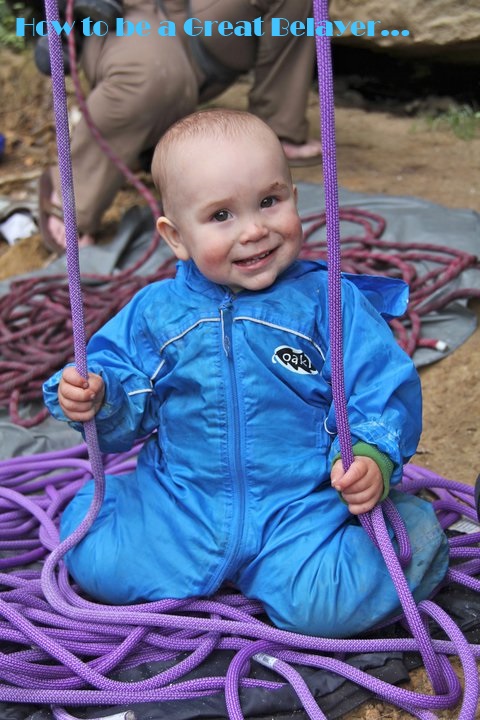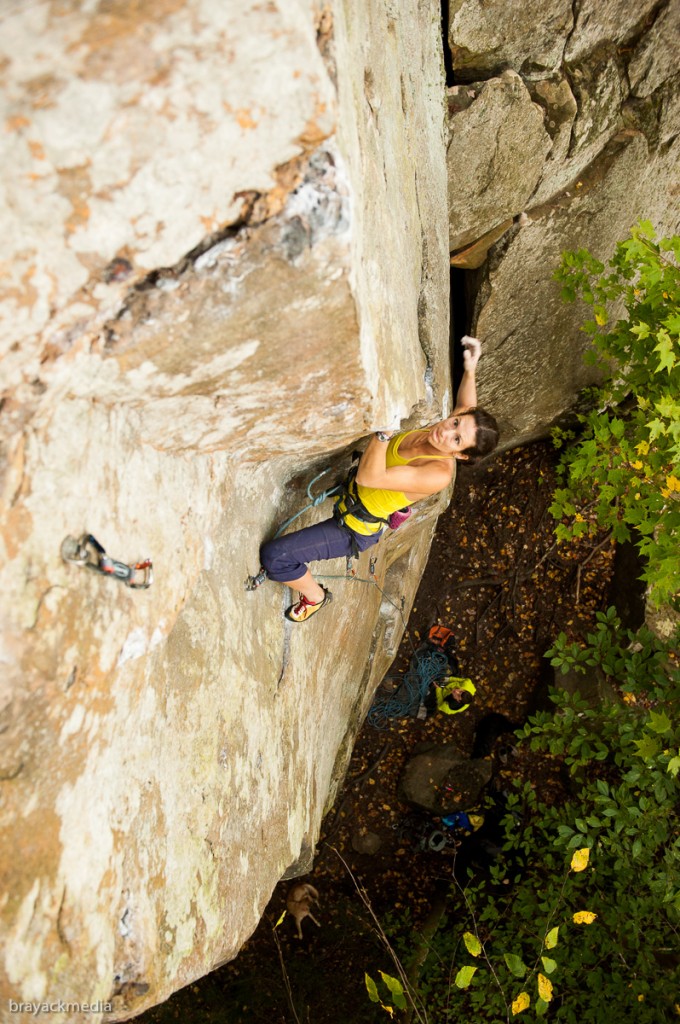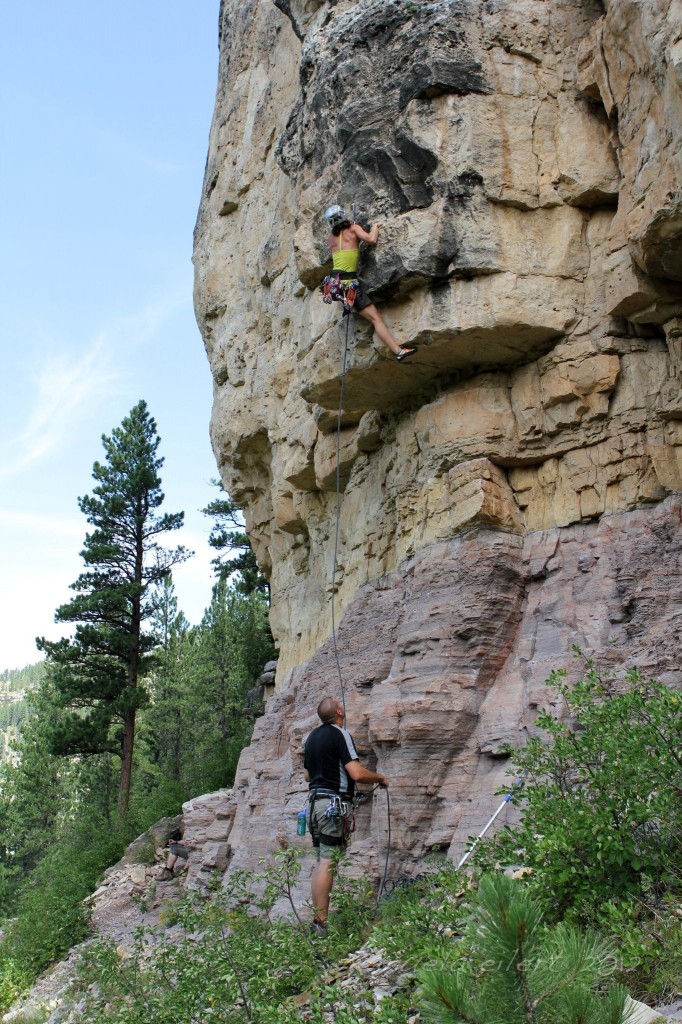How to be a Great Belayer
There’s a whole host of resources available online and in print aimed at how to successfully climb harder, stronger, higher. However, there’s only a fraction of information available for another crucial, yet often overlooked skill that is vital to every good send: the art of belaying. Sure, most climbers, even newbies, have a basic knowledge of how the belay system works, and understand how to use a belay device of their choosing. They can most likely pass a belay test at their local gym and can handle the number one priority for a belayer – keep the climber off the ground. That’s good. You should never leave the ground tied in with someone you don’t think can at least do that. But there’s a lot more to it than that if you want to be a really GREAT belayer. What’s the incentive? Besides the obvious (keeping your climber as safe as they can possibly be), a great belayer doesn’t go unnoticed. Gain a reputation for giving a good catch, and you’ll never have to scramble to find a climbing partner again! I know that for me personally, the closer I get to my limit, the pickier I get about who’s going to give me a catch, especially if there’s a scary clip or a long runout involved on the climb. So whether you’re new to the sport and looking to improve your skills, or just want to be everyone’s go-to-guy (gal) for their projects, here’s some tips for turning a good belayer into a GREAT belayer.
1. COMMUNICATION. Work out logistics with your climber before they leave the ground to make sure you’re on the same page with regards to lowering or rappelling for single pitch routes. In multi-pitch situations, where hearing one another may be difficult, you may need to develop a few non-verbal commands (such as X number of rope tugs) to denote on and off belay commands.
2. ENCOURAGEMENT. Don’t be afraid to let your climber know that you’re there for him/her. My hubby can tell by my body language when I’m hesitating or nervous, and he’s always quick to shout, “Fall’s safe, go for it!” My friend Sam will say without fail in a crux sequence, “You’ve got this, I’m right here with you.” Knowing that a belayer is completely focused on the task at hand, rather than daydreaming about their own project might just be the confidence boost you need to power through a tough sequence.
3. GIVE A GOOD CATCH. Usually, an airy, soft catch is preferable to a violent whipper into the wall. It can turn potential broken bones into stomach-dropping featherbed landings. Many belayers have a natural tendency to sit back and hold their position without budging when they see a climber about to fall. Unless you want to whip your climber into the wall at mach speed, do not do this. Instead of acting in opposition to your climber, gently shift your weight forward to provide some “give” in the system. If the fall is clean and your climber is high off the ground, resist the urge to yank the extra slack out of the system – simply lock off where you’re at and allow yourself to be pulled. The shock from the fall will be scattered throughout the entire system – easier on the climber, easier on the gear. If there’s a substantial difference in weight between belayer and climber, you may need to take a few extra precautions.
- Lighter belayer, heavier climber. If the belayer is lighter than the climber, it’s virtually impossible to give a hard catch, since the belayer will be lifted into the air. Don’t fight it, just go with it. (And make sure you’re standing directly under the route as opposed to several feet away from the base, so you just get yanked UP rather than IN.) If, however, the belayer is outweighed by a lot (such as the 100 pound difference between my hubby and I), other measures might be necessary. It’s normally not recommended for a belayer to anchor in (you can’t get out of the way of potential loose rock, and it can make for a jarring fall to your climber and your gear). But in our case he will literally fly right past me as I get sucked up into the first piece of protection. Unless he is very high on a route, there is a very real danger of him hitting the ground if I’m not careful. Our solution is for me to anchor in as close to the base as I can VERY LOOSELY. This allows for plenty of give in the system while still enabling a controlled catch.
- Heavier belayer, lighter climber. On the other hand, if you’re belaying a much lighter climber, you will have to make a conscious effort to provide a soft catch. Some people do this by stepping forward as the climber is falling, others give a well-timed jump. Attention small climbers: Don’t be afraid to make your preferences known to your belayer, as it’s your body that will bear the brunt of a jarring catch, not their’s.
Note: If there is a ledge or protruding rock/tree in your climber’s landing zone, this “soft catch” technique might only make matters worse. ALWAYS be on the lookout for obstacles that might get in the way in the instance of a fall and give and take up slack accordingly.
4. PAY ATTENTION. If you see your climber doing something that looks weird, don’t be afraid to speak up. Don’t assume that they realize the rope is behind their leg, or that they “meant” to back clip that last draw. Better to say something needlessly and feel a little silly if you’re wrong than to hold your tongue and regret not being able to prevent an accident!
5. DON’T SHORT-ROPE. Anticipate when your climber is going to reach down so that you can time your slack with their clip. Nothing is more frustrating than reaching down to pull up rope in a tenuous clip to find that your belayer is not doling out enough slack! Be especially careful during traverses – if you keep your climber too tight, you can pull them off the wall, but keep them too loose and your climber runs the risk of stepping on the rope.
When it comes right down to it, belaying is a lot more than just holding a belay device. When you tie in with another climber, you hold that person’s life in your hands (literally), and they are counting on you to use good judgment. I’ve definitely been in situations where a good belay kept a scary fall from potentially causing injury, and while I’ve thankfully never been hurt because of a bad belay, I’ve certainy had my fair share of unpleasant catches (usually from big dudes that stand as still as soldiers when I fall.) Don’t forget that when you’re dealing with a new partner that’s never belayed you before, it’s perfectly acceptable to discuss how you like to be belayed – any partner worth climbing with will listen to your requests. And if for whatever reason you have your doubts about someone, get someone else to catch you, or come back another day. Again, better safe than sorry! (And on a somewhat related note, if you’re in the market for a new belay device, check out the Cinch!)
To the other climbers out there, what qualities are most important to you in a belayer? What makes one particular person a “go-to” over someone else on a hard onsight or a project?





15 Responses to “How to be a Great Belayer”
I love this post. I am out at the crag a lot and so often you see (and I am sometimes guilty as well) folks carrying on full blown conversations while belaying as well as plenty of short roping. I think having a rock solid belay allows the climber to turn their attention towards success rather than catastrophic ideation regarding how their belayer is going to drop them or slam them into the face below. Good article, everyone should take note.
I get sketched out when people are in full blown convos. Multi-tasking leads to half-assing, and that ain’t cool when it’s my life on the line.
Great Post – it absolutely makes a big difference and especially since I fall into the heavy climber light belayer camp I’ve always been picky about who I let belay me. I’ve yet to deck and don’t want to start anytime soon. The tips on weight differential are good reads for those in that situation.
Erica,
Great article. I’ve always taken pride in giving my partner the best belay possible, and I’m honored to hear that you trust me with such. It’s so important to understand what elements go into a good belayer and a good belay. Like you said, it’s often an overlooked aspect, but there is nothing better than experience. Learning from other experienced climbers (while not sport climbing at the Red preferably) is a great way to learn and pick up good belaying skills.
I personally don’t want to even know I have a belayer until I need something. Sounds selfish but I prefer it that way. I don’t want to feel a tight rope, hear beta unless I ask, or usually even get encouragement unless my partner knows me well enough to give me what I need. That being said I’m always happy to encourage others and reassure my partners until told otherwise. More people than less I believe feed well off encouragement and motivation.
Good partners should be in tune with their partners every need (as far as climbing goes, what you do after is up to you and them), be ready for anything, and be willing to take off in a dead sprint into a thicket of briars if that’s what it takes to keep their partner off the ground.
Great post! Finally, someone who speaks out my mind! You can’t imagine how valuable this is for the one who’s leading to know his/her belayer is always “there” in every moment.
B and Steve – Agreed, crag gossip while belaying is NOT OK.
Mike B – Yeah I think “Don’t deck” is definitely a good mantra 😉
Sam – Oops well this is awkward…did you think you were the Sam I referenced? J/k, Thanks for all the solid catches 😉
Chris – Glad you enjoyed the post 🙂
Awkward…
My only critique of your article is to ask you to make your last point your first. The safest belayer is the one that’s paying attention. Period.
Malcolm – No arguments there. Thanks for reading 🙂
In addition to the communication on the ground, it’s important to let your belayer know when you’re clipping if you’re out of sight so you don’t get short roped.
I’d also be interested in hearing some tips regarding stance in relation to the climber. I find myself moving about during the early portions of the climb so my belay doesn’t impede the climber or create an unsafe situation.
David, Agree, “mid-climb” commands are important as well, and should definitely be discussed before you leave the ground. As far as stances, rope management can definitely be tricky for the belayer in the first 20 feet or so. It’s certainly situation dependent (no magic formula answer), but in my experience it’s very common to have to “dance” around with your climber until they are above those first few pieces of protection, particularly if the 1st bolt is stick clipped. .
Great topic!
I’d second Sam in that its really important to know your climber. For newbies, I pay more attention *verbally* and keep them on a tight rope because it makes people feel more secure. Usually, if I’m belaying someone experienced that I’ve not belayed before, I will ask them prior to roping up their preferences and clarify terms.
I also would NOT correct people at the crag for belaying you deem inappropriate (unless its ridiculous, crazy safety issues) Someone interrupted me and my husband on our last trip (thinking we were new climbers because we suck I guess). We’ve been climbing together for almost ten years, and I know he likes no talking, no beta unless asked and a lot of slack in the rope on lead. The “helpful” other climber stood under my husband offeri all sorts of beta and trying to tell me to pick up the slack and then got frustrated when I ignored her. She just made an awkward start turn completely miserable and my poor husband couldnt even go past the first bolt because he was so distracted with this chick trying to talk him through every move snd teach me how to belay. Eventually I told her we’d be climbing together longer than she had a drivers liscence and she went away…but gosh, it made the whole experience miserable and even more embarrassing! It was not a good morning haha.
Sarah – I’m sure it was anything but funny at the time, but your story made me laugh out loud because I could totally envision that happening. I think the best rule of thumb regarding beta is “when in doubt, shut your mouth.” Thanks for sharing 🙂
Thanks for this post, it was really great to get reinforcement on some of the things I already do, and new information (such as other ways to communicate to your belayer/climber…). The part about your hubby shouting, “Fall’s safe” is a big one for me–I think it would help me feel less apprehensive about the fall if someone condones it first. Great article
Elena – Glad you found the post helpful! Yeah if I’ having a “timid head” day it can be very helpful to have someone I trust give me that reassuring confidence boost so I can put fears of falling out of my mind.